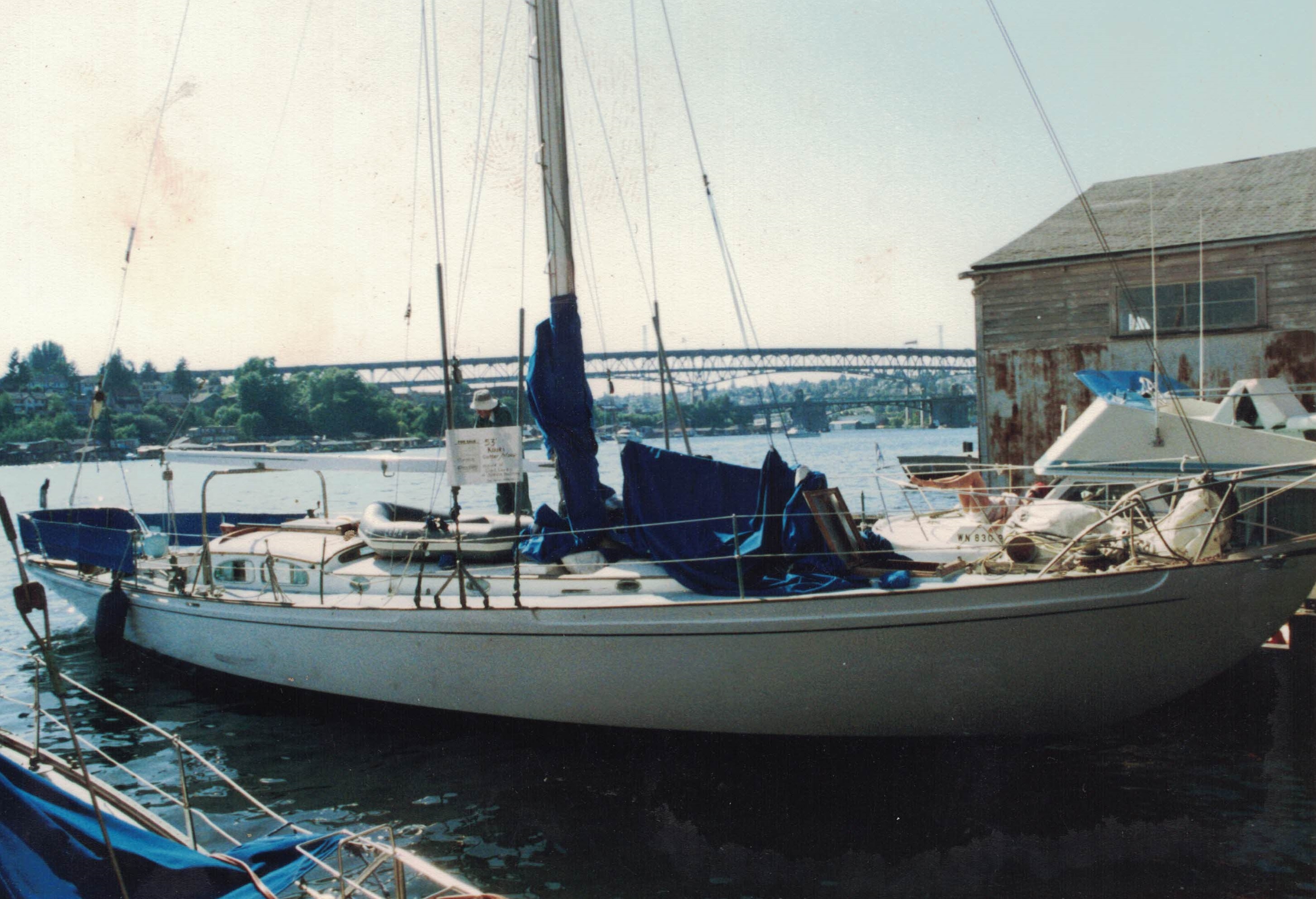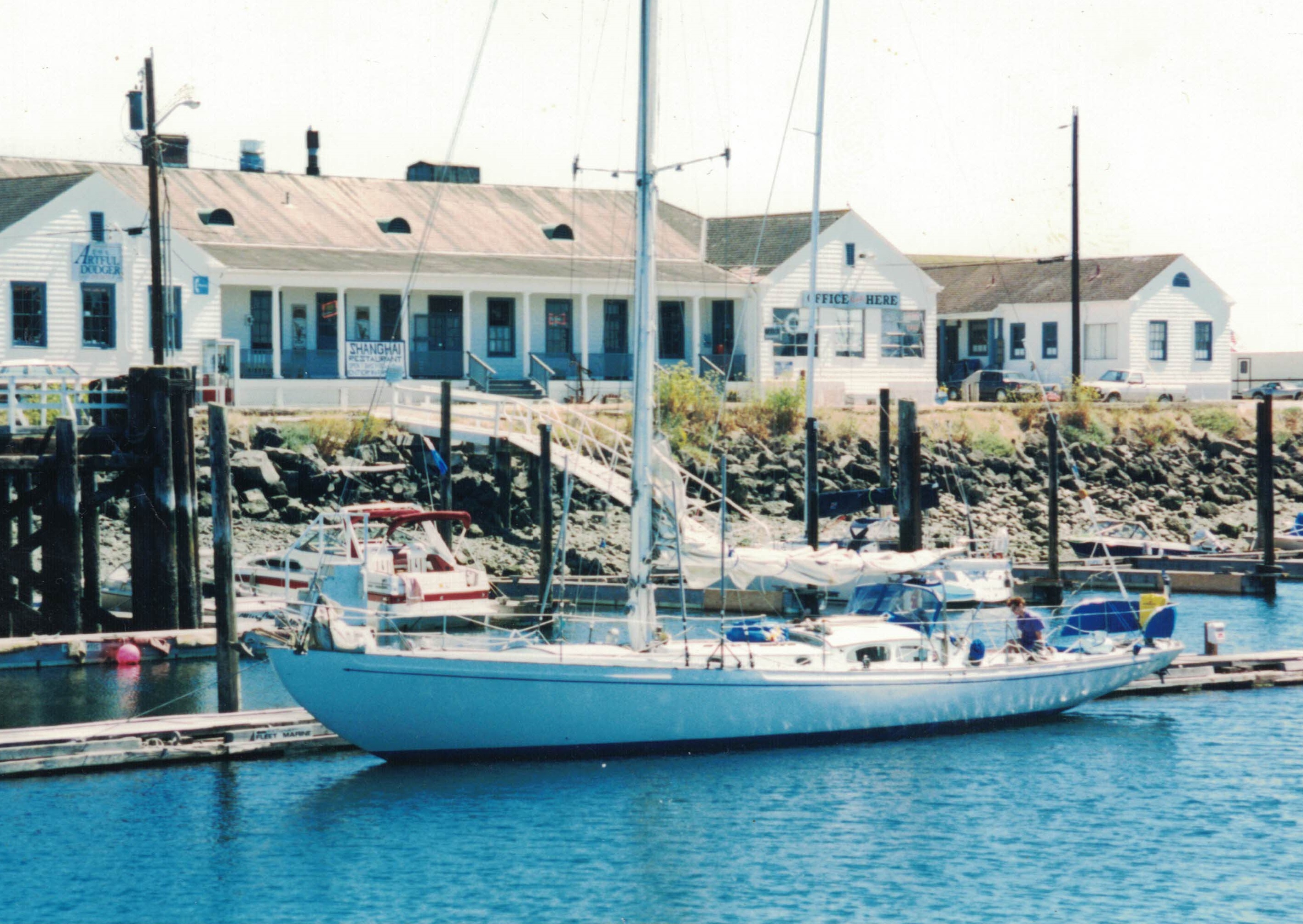There are two ways to work on a vessel, or any project really. There are things that you can fix while still using the object for its intended purpose. This includes regular maintenance items that only take it out of service for a short while. Eventually, everything gets to a point where you have to take it out of service and dig deeper in order to ensure its longevity. The biggest problem faced by anyone wanting to restore a vintage boat is deciding how far to take it apart before starting to put it back together again. It’s like crossing a desert, by the time you are in the middle its too late to stop, but not knowing where the water is makes it difficult to pick a direction. This is where a lot of projects end up. Too far to go to finish, in too deep to quit.
The marina was once filled with boats that had been taken out of service for the intended purpose of extending their longevity but never got put back together. Mostly these boats are now gone. You still find a few, covered in tents, growing weed, rotting faster than they are being refreshed. But they are getting to be few. Often the project turns out to be more expensive than anticipated. Or there isn’t enough boat left to justify the amount of work required to get it back on the water. Additionally it can be difficult to source the timber needed, particularly on large, heavy vessels. At some point it is easier to build a new boat. I’ve watched a number of projects go under because the amount of work was more than one person could do to stay ahead of the decay or the amount of money was so great that it couldn’t be justified.

I got lucky, our boat was in good shape! Frank Hyland, who owned Leda when we first became acquainted with her couldn’t understand why I was tearing his boat apart. A friend I made while in the process of working on Leda, had his own boat project. By the time we got to know each other, Leda had been stripped bare of all her rigging and deck hardware and much of her interior gutted. He asked me one day as I neared my relaunch date (a term I don’t use much as Leda stayed in the water through almost the entire process) what Leda looked like when I started. When I told him she looked great. He was confused. But she did. It was just obvious at that time that there were issues that needed to be taken care of. I never once thought it would take me seven years.

Twenty years later, I’m not sure I went deep enough, and of course after twenty years you get to learn about what mistakes you made. With luck, none of them are too bad. But this road isn’t always predictable. So we use the word “restored”. I’m not sure that is fully true, as mostly Leda was all there and we could use her as intended. “Refreshed” seems like something you do when you make the bed. We certainly went deeper than that. “Refurbished” might be just about right. But these are just words and the connotation will be different for different people. With automobiles there is a current phrase that gets used a lot, “resto-mod”. A restoration with modification. Not intended to be as it was when it left the factory, but improved upon, which of course is another subjective idea.
But I like that notion in reference to work done on Leda. She is a resto-mod. And we weren’t the first to have done this. She had been changed from her original condition at least once. There had been a number of “upgrades” done during the 1960s. Things like a propane stove (with oven) replaced the traditional counter top stove which was either alcohol or kerosene. She was given a refrigerator as opposed to an ice box. Her twin Coventry gasoline engine was replaced with a Perkins 4-cylinder diesel engine (A motor I have come to love). She was originally launched with no motor at all but after a short period the Twin Coventry was installed so that she might be moved from the harbor or saved from the rocks. Dooley reported the motor as being a “horrible thing”. When this motor was installed, her shaft was run at an angle and protruded on the port side of the keel just forward of her rudder. When the Perkins was installed, the shaft was placed on the centerline through the deadwood and an aperture was placed in her rudder to accommodate the propeller.
Other notable changes prior to our stewardship include shortening her mast and changing her rig. She was launched as a fractional rig with twin head sails. Probably due to racing rules and handicaps her rig was shortened by nine feet to a masthead rig. She was not launched with winches but instead used handy-billies (block and tackle) for mechanical advantage on her sails. By the time she came to us she had a number of winches on board. Her beautiful pohutakawa Samson post had been removed from the foredeck and replaced with an Ideal vertical windlass, an electric one! (I wish I had that Samson post, but really like having a windlass!) Her wireless radio had been replaced with VHF, single sideband and a Ham radio. Now of course we use satelite and cell phones! Her sails were now made of Dacron as opposed to linen, her cordage was nylon and other modern synthetics, her rigging was stainless steel. Her tiller had been replaced with a wheel. The process of modification had really been going on since her launch.
There are things that have changed in order to protect the environment and the people working in the manufacture of and the use of the products. Things like red lead are no longer readily available. And as manufacturing changes, so do the items that are easy to source. At one time I could go to the local plumbing store and buy red brass that was noble enough to use for marine fittings. Now you have to buy it from a specialty store as the brass fittings at Home Depot are yellow brass and likely to sink your boat if you use them. For better or worse the products used to maintain these vessels has changed.
So, “restoration”. It connotes setting something back to how it was as new. Let’s be clear, this hasn’t happened with Leda. It won’t likely happen. As with all work of this nature, it can be argued as to whether a modification is an upgrade, or a mistake. So whether the word “restoration” is used here, or “refurbished” or “refreshed”, we are talking about a “resto-mod”. For the purpose of this web site, any work done between autumn of 1991 and July of 1998 will be considered as part of a restoration. Any work before or after that date will just be part of boat ownership!

Key to all of the work that was to follow was the fact that at some time in her past her decks and cabin tops had been covered with fiberglass resin and cloth. This lay at the center of the issues and could not be ignored. I will get into this in detail as we progress.
As for the upgrades performed on Leda to date. I will gladly justify any of them. Whether I would do it the same way again is another thing altogether. I will mention here so as to avoid any illusions by anyone reading this that I had plans for Leda, including sailing the world’s oceans. It turns out Leda had plans for me. The journey has not been what I anticipated when I was 29-years old. Is it ever?
Next: What to Do?